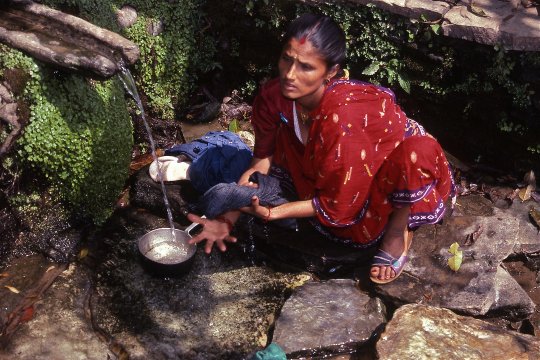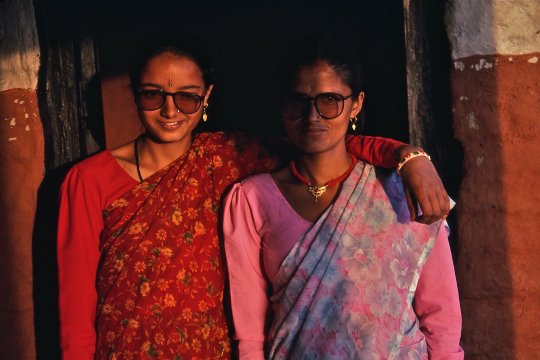|
John Tyman's Cultures in Context Series NEPAL |
|
|
|
348-368 |
|
John Tyman's Cultures in Context Series NEPAL |
|
|
|
348-368 |
 |
| 359. Children today may be “spoiled” with sweet biscuits and the like: but manufactured foodstuffs have not yet had the disastrous impact on health that they have in many countries. |
 |
| 363. In this picture Gopal’s parents are dressed in the old way, but their daughter and daughter-in-law are wearing their saris Indian style, and their grandson wears his school uniform. |
 |
| 365. On their foreheads many women today wear a fancy tika -- as a kind of beauty spot, which can be bought from shops locally. |
 |
| 367. Where a woman displays red dye in her hair parting, as here, it indicates that she is married. |
 |
| 368. As accessories she is likely to wear beads and bangles (of gold if their husband can afford it) and , today, sun glasses. |

![]()
Text, photos and recordings
by John Tyman
Intended for Educational Use
Only.
Contact Dr. John Tyman at johntyman2@gmail.com
for more information regarding
licensing.
![]()
www.hillmanweb.com
Photo processing, Web page layout,
formatting and hosting by
William
Hillman ~ Brandon, Manitoba ~ Canada